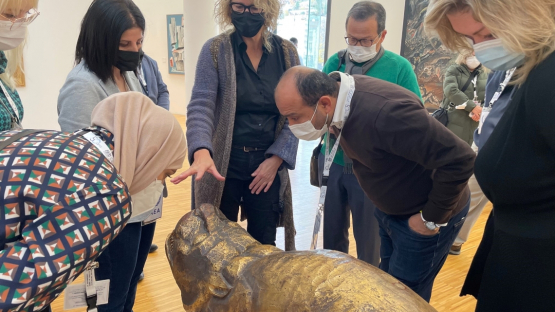For the past 50 years, many museums around the world have used nuclear techniques to help preserve some of the world’s most important historical and cultural artefacts. From the famous ancient Egyptian Pharaoh Ramses II, to 14th century paintings by Venetian masters, radiation technology plays a role in maintaining and characterizing cultural heritage.
To celebrate this jubilee, the IAEA, in collaboration with France’s ARC-Nucleart, hosted a workshop and meeting of experts in Grenoble on radiation technologies for cultural heritage preservation. With over 100 participants from Asia and the Pacific, Africa, Europe and Latin America and the Caribbean, experts exchanged ideas and reflected on the priceless artefacts nuclear techniques have helped to preserve and study, characterizing the age and history of significant objects. It was followed by a day reflecting on some of the most fascinating stories of preserved artefacts and discoveries made over the past 50 years.
“Before the use of nuclear techniques in conservation and preservation, heritage objects often decayed due to biological attack, or corroded and withered with time, losing part of their cultural value,” said Laurent Cortella, Head of Facility Management and Research Engineer at ARC-Nucleart. “Over the last half a century, this problem has been mitigated through the use of gamma irradiation for conserving archaeological, historical and ethnographic cultural objects. We need to continue understanding how materials degraded and developing new treatment techniques so museums around the world are able to display invaluable pieces of art.”
Wooden objects, for instance, are often exposed to infestations of insects, fungi and algae, putting them in danger of structural weakness and degradation. The famous early 18th century statue of Saint Maurice, the Egyptian military leader who headed the legendary Theban Legion of Rome in the 3rd century, for instance, faced significant structural weaking. Restoration experts at ARC-Nucleart exposed the statue to gamma radiation to disinfect and consolidate it and help give back its original structure.








